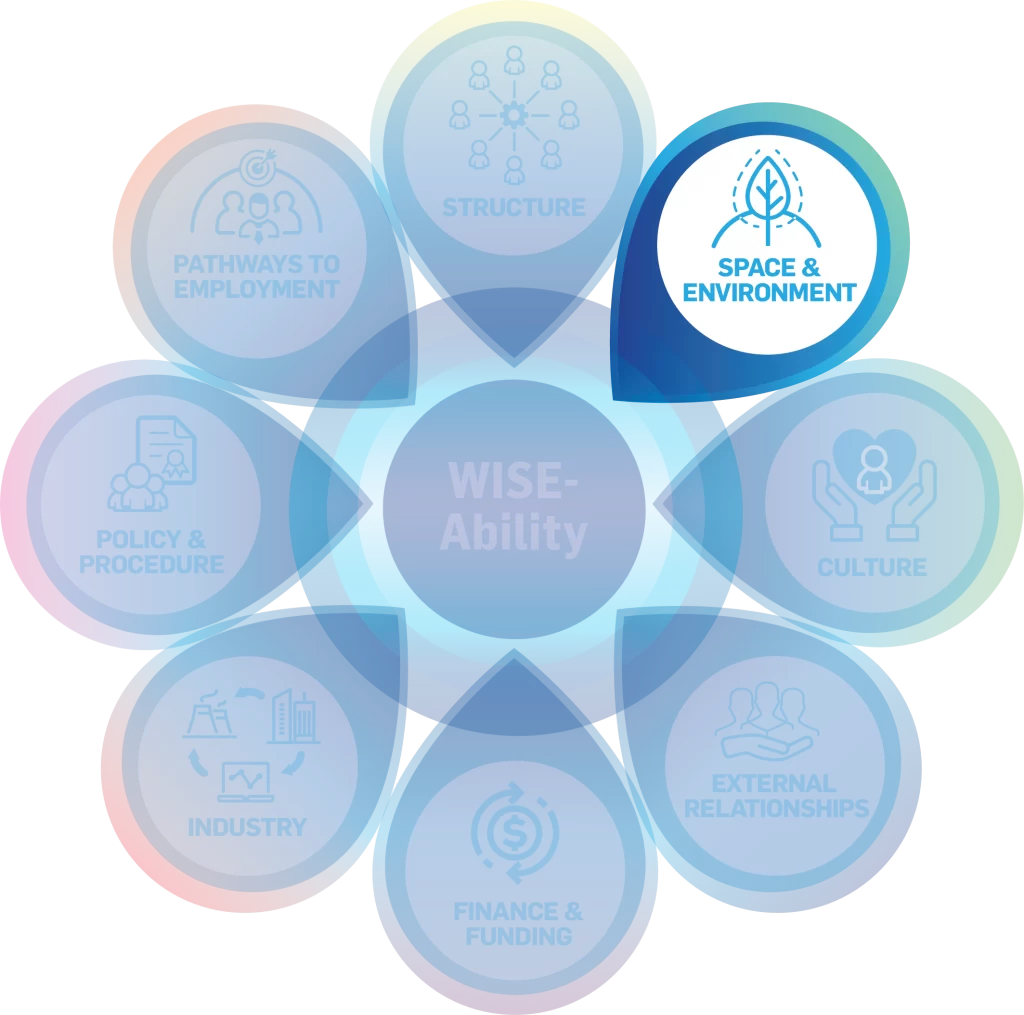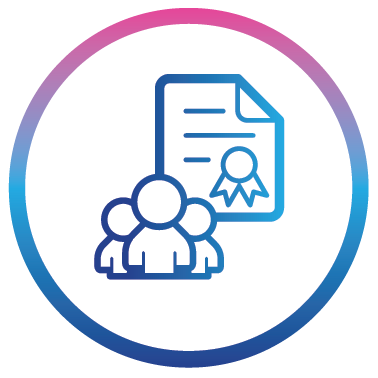Space and Environment
The use of physical space can improve or undermine participation. Consider for example: do busy work environments suit individuals? And where are the safe areas, nooks and crannies?
Spatial design can also affect how you meet your WISE social purpose goals. Consider, for example, who and how many people the work and training settings can support.

Environment
Part of the job matching process for WISE staff is understanding if a participant is comfortable in the Supported or Open Employment workspace. Having a mix of busy/active and calm work spaces available to individuals supports different workspace preferences and mitigates workplace stress. Consideration also needs to be given to how individuals have access to food and drink in any work or training environment.
Supported Employees identified that working in busy environments can be a challenge, particularly if there is limited support. Busy means an active environment and involves working at fast pace often with high levels of social interaction. A calm environment includes controlled social interaction, controlled noise levels and pace. Provision of protective equipment (i.e. sound cancelling headphones) can help.
It is vital for all employees to have access to food and lunch areas. Industrial work areas may have limited areas to food. This can be an issue if a support or open work setting does not have a staff cafeteria.
Accessible and Modifiable Layout
Having enough space to move safely and freely around the workplace is vital. Having clear pathways for Supported Employees to access different rooms/spaces enables participation and productivity. WISEs that have business sites that are connected to the outdoors or to open-plan areas are better for personal health. Open, spacious environments can also be simulated by warehouse settings or indoor-outdoor cafes.
Making spaces easy to access includes monitoring the number of people using spaces, i.e. a lunch area. Layouts that can be modified (i.e. moving tables, chairs, machinery), means that individuals can work in large or small teams and equipment can be moved to suit these different configurations. Being agile in this way can also help WISEs meet the needs of new/different contracted jobs. WISEs can test the layout of workplace and other spaces by seeking feedback from Individuals.
Some employees prefer outdoor work so this requires external environments to also be accessible.
Safe Time and Areas
Feeling safe and secure in the workplace reduces stress levels and increases belonging and productivity. Consider what kinds of safe areas you will offer. Different kinds of safe areas can be generated through informal use by staff and individuals. While quiet rooms suit some people for breaks, relaxation, and meetings/conversations, others enjoy physical movement or driving to support well-being.







